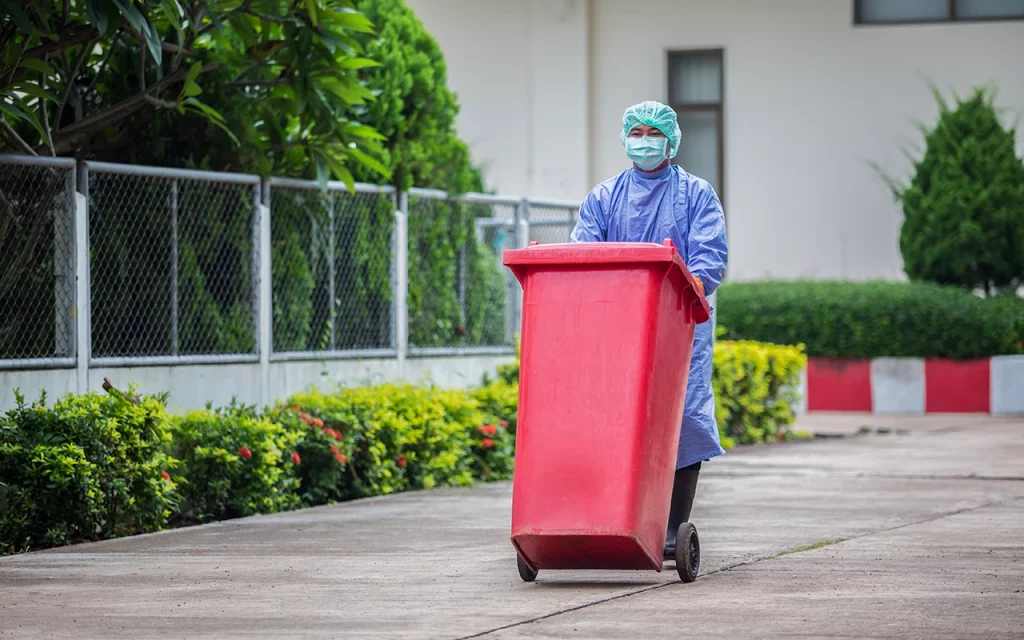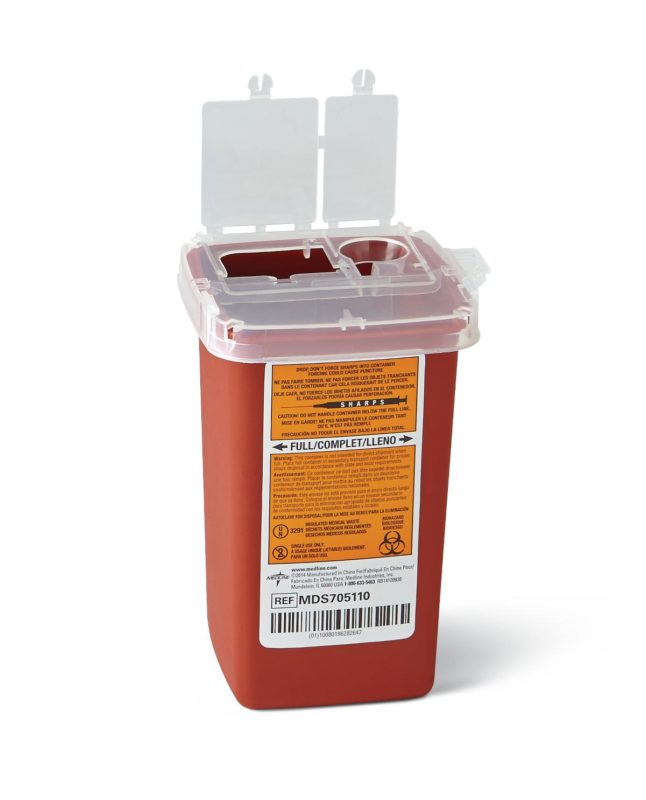Effective and Environmentally Friendly Medical Garbage Disposal Solutions
In the ever-evolving area of health care, the problem of clinical waste disposal remains a topic of critical value. As hospitals, facilities, and various other health care centers make every effort to give top quality person care, they need to also deal with the challenge of effectively and sensibly getting rid of their waste - medical waste removal services. In an era where ecological sustainability goes to the forefront of public consciousness, locating services that are both efficient and environmentally pleasant is not only an issue of conformity however also a testimony to the commitment of medical care establishments towards a greener future. From waste segregation practices to innovative reusing efforts, this conversation will certainly discover the different techniques employed to tackle this pressing concern, leaving you captivated and eager to check out the possible services that lie ahead.
Waste Partition Practices
Reliable waste segregation practices are important to make certain the safe and appropriate disposal of clinical waste. Medical waste, which includes products polluted with potentially contagious materials, need to be handled in such a way that lessens the threat of harm to both public health and wellness and the setting. Correct waste partition plays a critical duty in attaining this goal.
Waste partition entails the separation of different kinds of waste based upon their features and possible risks. This process makes sure that each kind of waste is treated and disposed of suitably (medical waste disposal services with WasteX). It starts at the factor of generation, where healthcare facilities should have designated bins and containers for different waste categories, such as sharps, infectious waste, pharmaceutical waste, and non-hazardous waste
By segregating clinical waste at the resource, health care companies can stop cross-contamination and minimize the danger of exposure to contagious agents. This technique additionally facilitates the recycling and recuperation of certain products. As an example, setting apart and reusing tidy plastics and glass minimizes the demand for resources and minimizes the environmental influence of medical waste disposal.

Autoclaving and Sanitation Methods
In order to make certain the appropriate and safe disposal of medical waste complying with efficient waste partition methods, healthcare centers must use autoclaving and sterilization techniques. Autoclaving is an extensively utilized approach that utilizes high-pressure heavy steam to disinfect medical waste.
This includes dealing with the waste with chemicals such as ethylene oxide or hydrogen peroxide, which kill bacteria by disrupting their cellular framework. It is crucial to note that chemical sanitation calls for correct handling and disposal of the chemicals made use of, as they can be hazardous to human health and the environment if not managed correctly.
On-Site Waste Treatment Systems
Healthcare centers have actually implemented on-site waste therapy systems to resolve the disposal of clinical waste in a effective and secure fashion. These systems give a hassle-free and cost-effective remedy for handling medical waste generated within the facility. On-site waste therapy systems use different technologies to treat and get rid of of clinical waste on-site, decreasing the requirement for transportation to off-site centers.
One generally utilized on-site waste treatment system is the microwave technology. This modern technology utilizes microwave energy to decontaminate and disinfect medical waste, reducing its quantity and making it safe for disposal. An additional system is the chemical disinfection modern technology, which includes treating clinical waste with chemicals to kill pathogens and minimize its dangerous nature. This approach is especially effective for fluid medical waste.
On-site waste therapy systems use several advantages. To start with, they remove the risk of medical waste being mishandled throughout transport, reducing the capacity for contamination and exposure to dangerous materials. In addition, these systems aid medical care centers follow waste monitoring guidelines by giving a hassle-free and efficient disposal approach. On-site therapy systems minimize the general environmental impact of medical waste by minimizing transport and the requirement for landfill room.
Recycling and Repurposing Efforts
As healthcare centers aim for lasting waste administration methods, they are increasingly checking out recycling and repurposing initiatives as a means of reducing the environmental influence of clinical waste. Reusing and repurposing campaigns include discovering innovative ways to recycle or change clinical waste right into brand-new products or materials. This not just aids to lessen the volume of waste that ends up in garbage dumps or incinerators but also decreases the usage of basic materials and power needed for manufacturing brand-new items.
One example of recycling in the medical care field is the reprocessing of single-use medical gadgets. These devices, such as surgical tools or catheters, are generally discarded after a solitary use. Developments in modern technology and rigid sterilization procedures have actually made it possible to securely clean, decontaminate, and reuse these tools multiple times. This not just decreases the quantity of waste produced yet likewise conserves healthcare centers significant prices associated with buying new gadgets.
An additional reusing initiative includes the recycling of plastic containers, such useful reference as drug containers or syringe housings. These containers can be accumulated, arranged, and sent to recycling facilities where they are refined, melted down, and transformed into new plastic items. This aids to conserve resources and minimize the need for virgin plastic production.
In addition to reusing, repurposing campaigns entail finding alternate usages for clinical waste. For instance, shredded paper waste from medical records or packaging materials can be repurposed as bedding material for animals or as insulation material (medical waste removal services). Natural find more waste such as food scraps from healthcare centers can be composted and used as fertilizer in gardens or agricultural areas.

Renewable Resource Solutions
One effective approach to mitigating the environmental influence of medical care procedures includes carrying out renewable resource services. Healthcare centers, such as hospitals and clinics, eat substantial quantities of power for different objectives, including lights, heating, cooling, and operating medical tools. By transitioning to eco-friendly power resources, these facilities can considerably reduce their carbon impact and add to a more sustainable future.

Applying renewable resource services in health care facilities not only minimizes greenhouse gas exhausts but also provides long-lasting expense financial savings. While the preliminary financial investment in renewable energy facilities may be higher, the long-lasting functional costs of renewable resource systems are dramatically reduced contrasted to traditional fossil fuel-based power resources. Additionally, sustainable energy systems are trustworthy and can give a secure and nonstop power supply, making sure continual medical care solutions also during power failures or emergencies.
Final Thought
In conclusion, applying eco friendly and reliable medical waste disposal options is important for keeping a sustainable health care system. By taking on waste segregation techniques, autoclaving and sterilization methods, on-site waste therapy systems, recycling and repurposing efforts, and renewable energy remedies, healthcare facilities can dramatically decrease their ecological effect.
It begins at the point of generation, where health care centers should have assigned containers and containers for various waste categories, such as sharps, contagious waste, pharmaceutical waste, and non-hazardous waste.
In order to make certain the safe and appropriate disposal of medical waste complying with efficient waste partition techniques, healthcare facilities need to use autoclaving and sanitation techniques.Healthcare facilities have carried out on-site waste therapy systems to resolve the disposal of medical waste in a effective and risk-free way. On-site waste therapy systems make use of numerous modern technologies to Learn More dispose and treat of medical waste on-site, minimizing the need for transportation to off-site facilities.
As healthcare facilities strive for sustainable waste management practices, they are increasingly exploring recycling and repurposing initiatives as a means of reducing the environmental influence of clinical waste. - medical waste removal near me